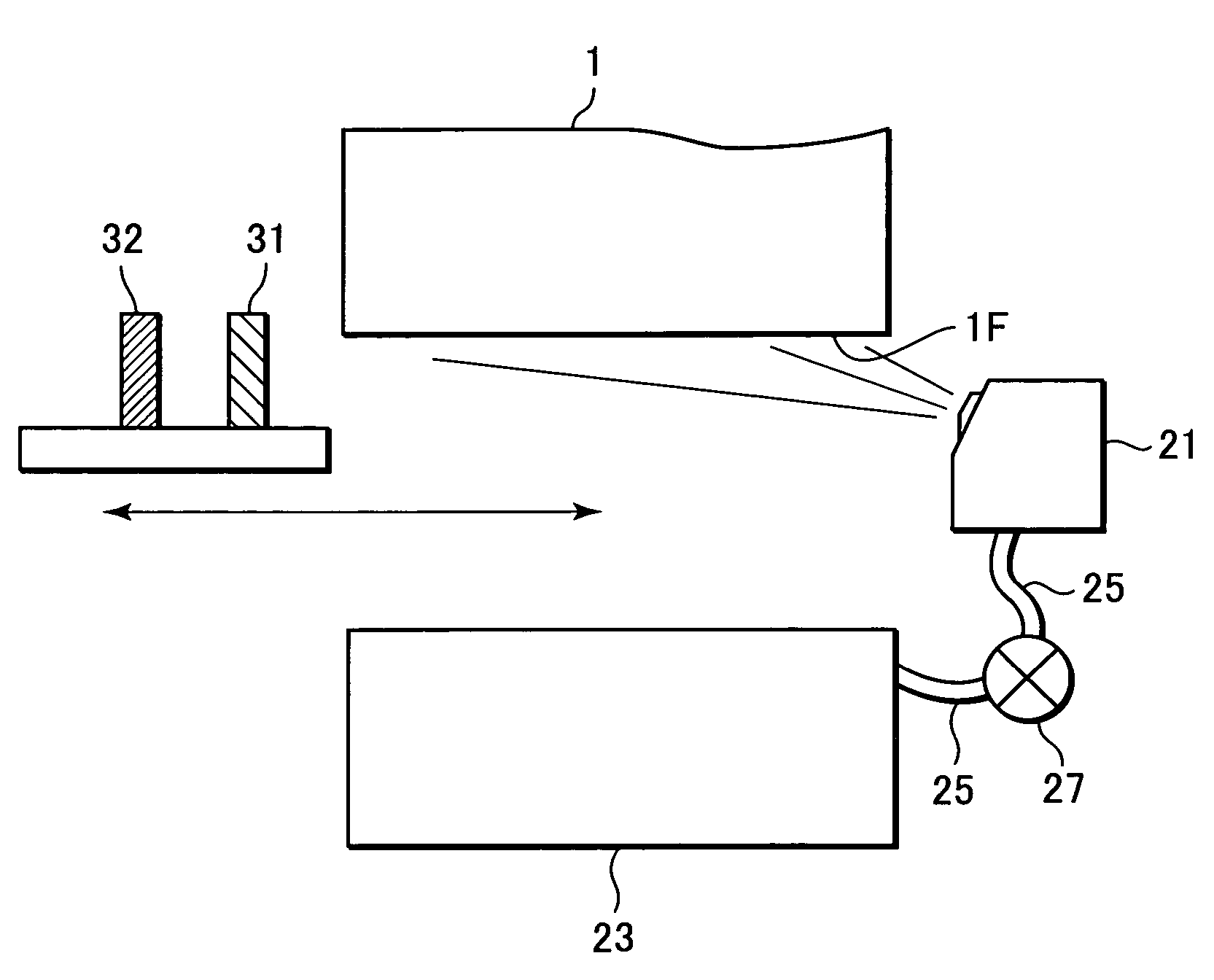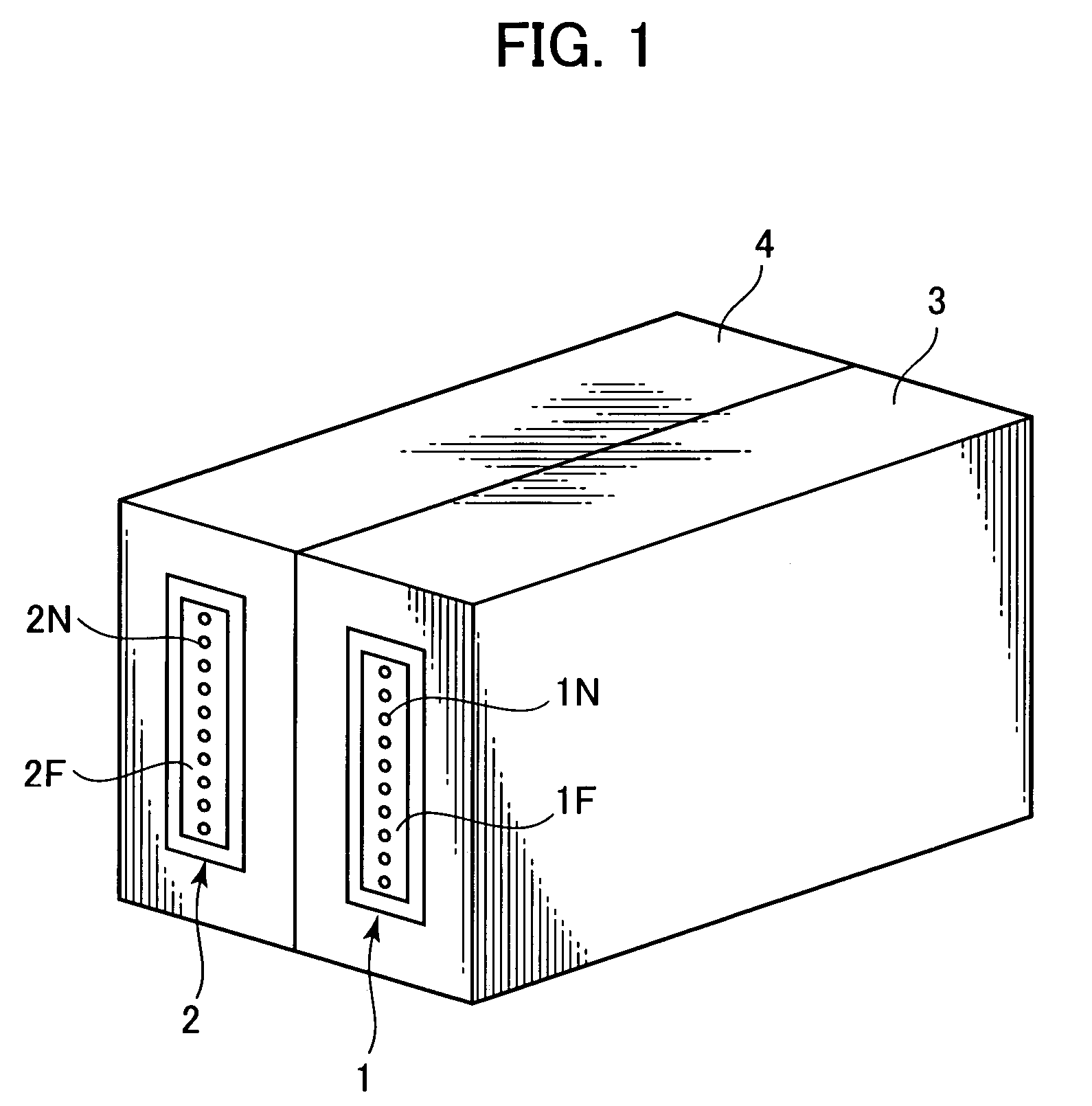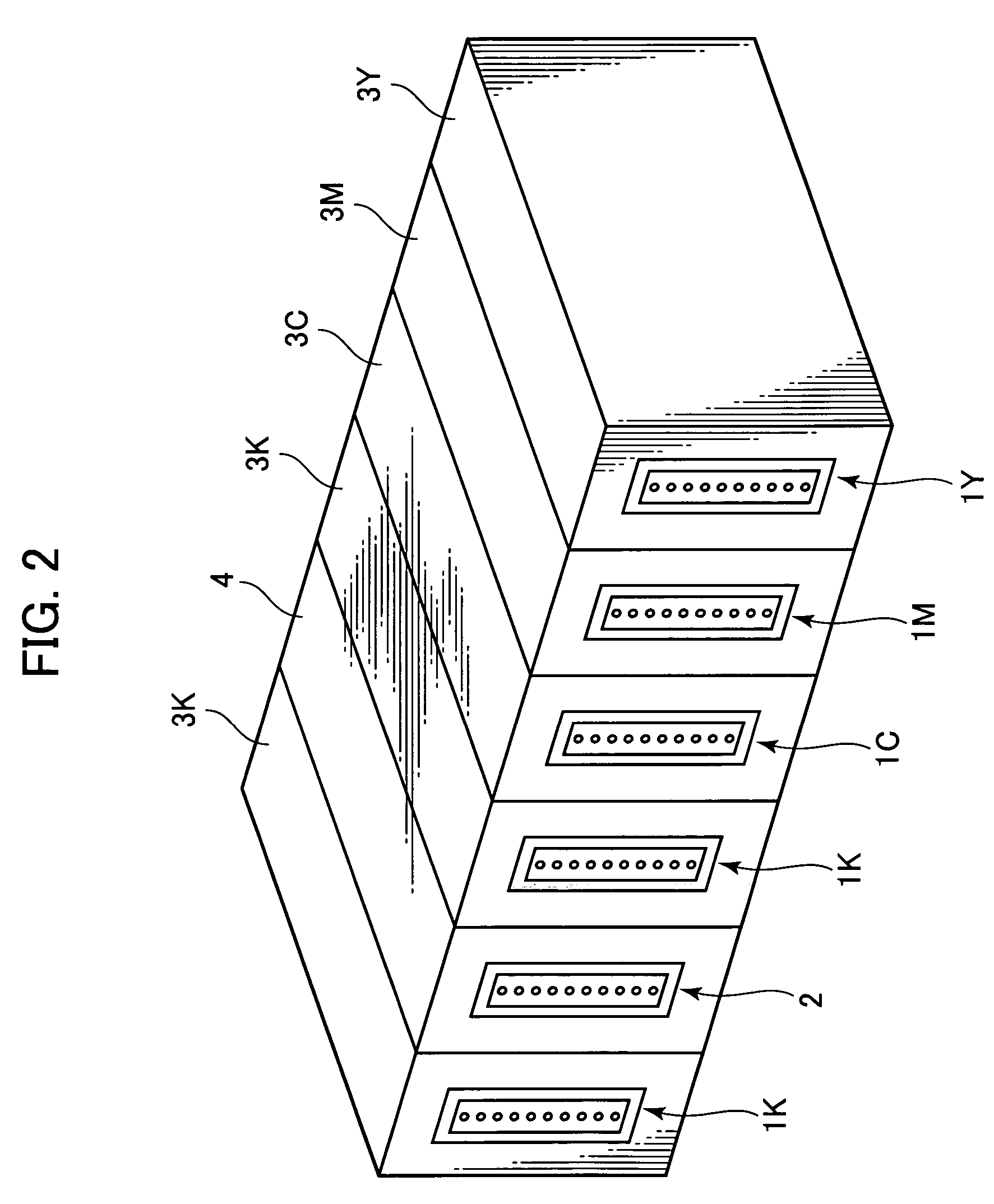Ink jet printing apparatus
a printing apparatus and jet printing technology, applied in printing and other directions, can solve the problems of deteriorating printing quality, affecting printing quality, and affecting printing quality, so as to prevent or suppress the generation of reaction products and achieve stable printing quality.
- Summary
- Abstract
- Description
- Claims
- Application Information
AI Technical Summary
Benefits of technology
Problems solved by technology
Method used
Image
Examples
first embodiment
[0062]FIG. 7 is a specific diagram showing a discharge recovery arrangement according to a first embodiment of the present invention.
[0063]In FIG. 7, a spray device 21 is used to spray one of the anti-coagulation liquids in Table 1 on the face surface of the ink head 1, and an anti-coagulation liquid tank 23 is used to retain the anti-coagulation liquid. The anti-coagulation liquid retained in the anti-coagulation liquid tank 23 is supplied by a pump 27, through a supply pipe 25, to the spray 21. The anti-coagulation liquid, sprayed on the face surface by the spray 21, is mixed with ink or reaction liquid that later will be attached to the face surface, and acts to prevent or suppress the generation of a reaction product. Further, the thus applied anti-coagulation liquid also acts to prevent a reaction product, which is generated on or attached to the face surface, from coagulating on the face surface.
[0064]In this embodiment, the above-described tank 23, the pump 27 and the spray d...
second embodiment
[0104]FIG. 9 is a specific diagram showing a structure according to a second embodiment of the present invention for applying an anti-coagulation liquid.
[0105]A core 28 having a comparatively large capillary attraction force is arranged in an anti-coagulation liquid tank 23 and partially projected therefrom. An air hole 26 communicating with the atmosphere is also formed in the tank 23. That is, an anti-coagulation liquid permeates the entire core 28 using capillary attraction. And one end of the core 28 is positioned outside the printing area of an ink head 1 and within the range wherein the ink head 1 is moved, so that the end can rub against the face surface of the ink head 1. With this arrangement, not only can the anti-coagulation liquid be easily applied to the face surface, but also a stain, which could not be removed from the face surface by wiping performed after the preceding recording operation, can be scraped off by the rubbing operation.
[0106]In this case, while taking ...
third embodiment
[0114]According to this invention, in order to prevent or suppress the generation of a reaction product, the anti-coagulation liquid is applied to the face surface of the ink head immediately before the recording operation is initiated. However, when the discharge port area is wet, this liquid tends to change the ink or reaction liquid discharge direction, i.e., it is possible that “deflection” will occur. Therefore, in this embodiment, on the face surface of the ink head, the wetting differs between the discharge port area and the other areas, and water repellency is increased only in the discharge port area. With this arrangement, the anti-coagulation liquid is applied to the face surface, except for the discharge port area, and the ink or reaction liquid discharge direction is not adversely affected by the anti-coagulation liquid.
[0115]Since the discharge port area is highly water repellent, even though the anti-coagulation liquid has not been applied, it is difficult for splashe...
PUM
 Login to View More
Login to View More Abstract
Description
Claims
Application Information
 Login to View More
Login to View More - R&D
- Intellectual Property
- Life Sciences
- Materials
- Tech Scout
- Unparalleled Data Quality
- Higher Quality Content
- 60% Fewer Hallucinations
Browse by: Latest US Patents, China's latest patents, Technical Efficacy Thesaurus, Application Domain, Technology Topic, Popular Technical Reports.
© 2025 PatSnap. All rights reserved.Legal|Privacy policy|Modern Slavery Act Transparency Statement|Sitemap|About US| Contact US: help@patsnap.com



